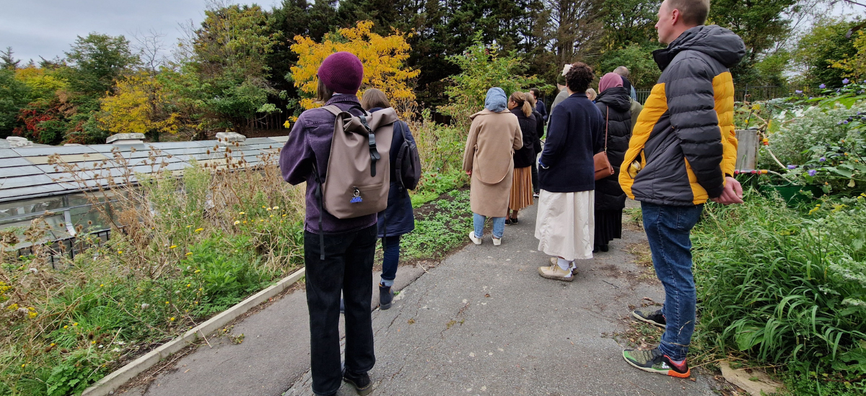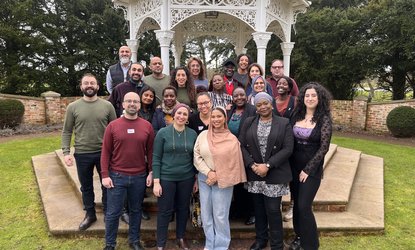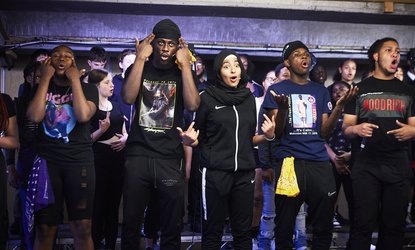Research by the Centre for Regional Economic and Social Research maps the UK women and girls' sector and its funding. Commissioned by Rosa, the National Lottery Community Fund and Esmée, the report shows the women and girls' sector is not getting the funding it needs. Annabel Durling, Funding Manager at Esmée, shares her reflections on the research.
Esmée Fairbairn Foundation has been funding organisations supporting women and girls in the UK for nearly two decades and part of our current strategy includes a dedicated funding priority on gender justice. Over this time, we have witnessed the hard work, dedication, skills and experience of a sector which does so much to support women and girls to live safe and full lives. We have also seen where the tireless advocacy work of those dedicated organisations has changed the course of legislation, policy and practice for women and girls and has undoubtedly had a huge impact on many lives.
In every area we fund, it is important to us that we understand the sector we are supporting, its characteristics as well as the challenges it faces. We have often heard that the women and girls sector is underfunded and, alongside two other funders, Rosa - The UK Fund for Women and Girls and The National Lottery Community Fund, we wanted to understand what this looks like. Together, we commissioned a quantitative piece of work to learn more about the organisations themselves (size, income levels, leadership), as well as what funding they were receiving and how this compared to other sectors. This has been undertaken by a brilliant team at Sheffield Hallam University (Centre for Regional Economic and Social Research) who have worked hard to explore these questions, looking at huge datasets in a way that has not been done before.
Read: Mapping the UK women and girls sector and its funding - where does the money go?
Please note: the report was amended on 2 May 2023 to include reference to the work of Dr Olumide Adisa et al.
What the research shows
In her powerful introduction to the report, Rebecca Gill, Chief Executive at Rosa, highlights the critical importance of a well-funded women and girls’ sector to the wellbeing of society as a whole.
Women’s and girls’ organisations are at the forefront of addressing inequality and, as funders, we need to champion and invest in them in a way that reflects the enormous value of their work.
Rebecca Gill, Chief Executive, Rosa
The report draws out key findings which confirm the concerning picture regarding levels of funding going into the women and girls’ sector and the challenges this creates. Less than 2% of all grants recorded on 360Giving in 2021 went to women’s and girls’ organisations, and 50% of all grants to this sector are for £10,000 or less. The average grant value for women and girls’ organisations is significantly lower than for all other organisations.
Compounded by the ongoing impact of COVID and wider cost of living crisis, the findings show that the women's sector is 'undervalued, under resourced and ultimately unsustainable'.

Funding for specialist organisations
For organisations supporting Black and minoritised women and girls this is even more stark. In 2021, one third of all grant funding for women and girls-focused activity was awarded to organisations which were not specialist women’s and girls’ organisations (£24.7 million). We know that funding specialist women-led organisations is important, not least because of the powerful outcomes they create for women and girls who experience multiple challenges and discrimination. Funding them is crucial so that they can continue to advocate for better understanding and recognition of the needs and challenges faced by those they work with. We can't afford to lose their voices.
What next?
Whilst the research has been able to tell us a lot, it has also been interesting to discover what the data hasn't been able to tell us. The recommendations around improving data capture are crucial if we are to understand a true picture and to act on it. The data is powerful, but it is as important to think about it alongside more qualitative studies which share the voices of those within the women's sector. What is their experience of the funding picture and how does it support or hinder them from meeting their goals? I know Rosa is going to be working on this next and I think this will add a crucial perspective to the issue and other sector partners have worked hard to share the perspectives of their members through research.
What are we doing with this information at Esmée? Independent funders can’t give the women's sector all the funding it needs, or anywhere close. But it’s important that we think about what might be undermining the work of the organisations we do fund as well as what may be barriers to achieving the long-term outcomes we want to contribute to in our gender justice priority.
Is there something happening to women and girls’ organisations which needs to be highlighted and tackled? Are the injustices that women and girls face being mirrored in women and girls’ organisations receiving less funding or being expected to survive on volunteer power in a way that other organisations are not? And is this even more so for Black and minoritised-led and disabled women-led organisations? How can we support systems change to enable a stronger and more vocal sector to shout loud about injustices? These are all questions we are thinking carefully about and will feed into how and what we fund.
Ultimately, we want this report to be useful: to other funders to help them understand the picture for women and girls’ organisations (and, for some, to venture into this space for the first time), and for the organisations themselves who we hope can use the data to make the case for more support. I hope you find it an interesting and useful read.





